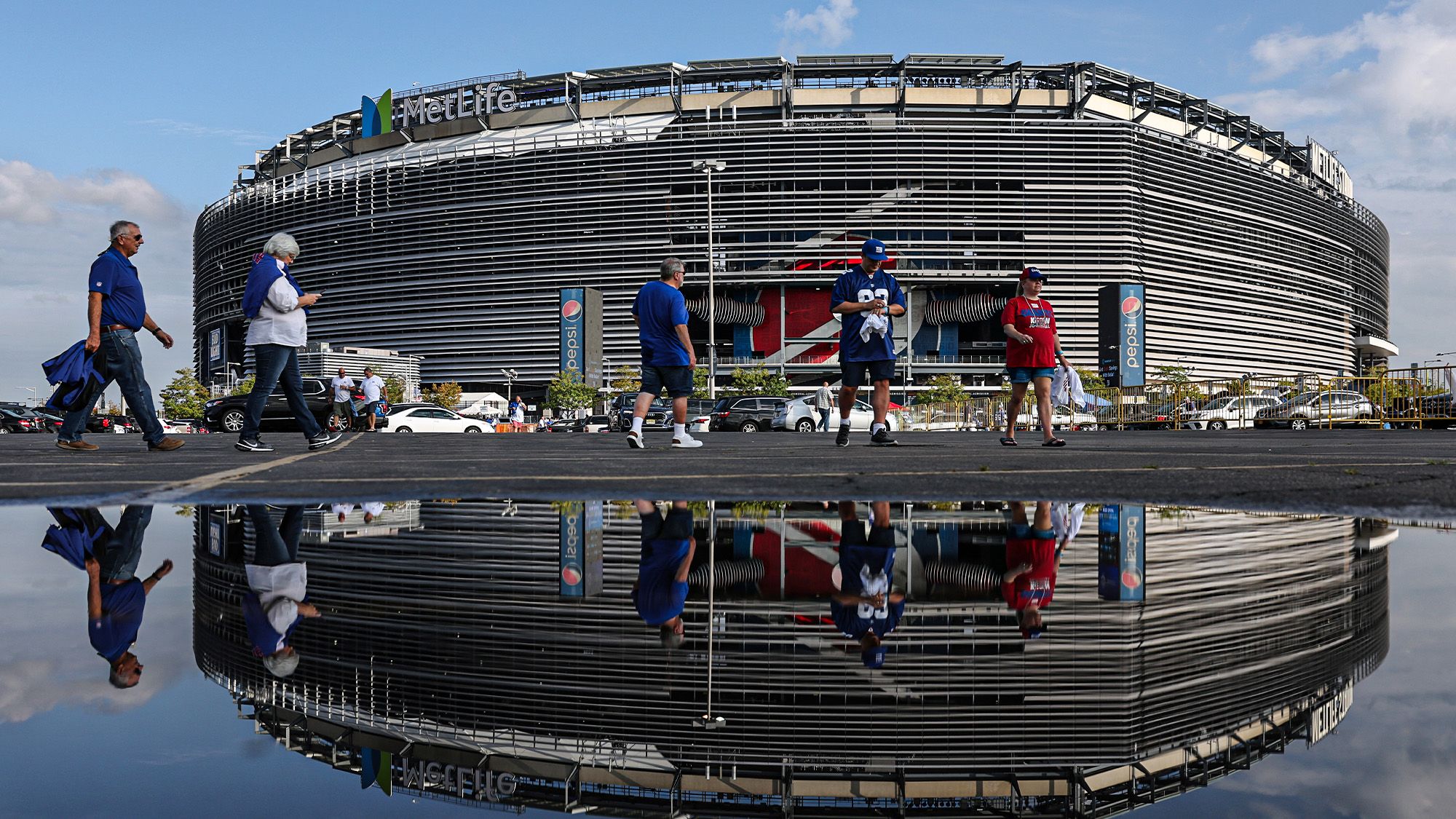With less than three weeks remaining until NFL training camps open, media outlets are running out of ideas for player and team-oriented lists to post on social media in search of engagement, so they’ve turned their attention to stadiums.
On Thursday, FOX Sports’ official X account posted a graphic that ranked the “top 10 most iconic NFL stadiums.” The stadium placed in the No. 10 slot will shock you! (Yes, I resorted to shameless attention-grabbing verbiage with that one. Seriously, though, you will be shocked.)
Alongside indisputably iconic stadiums like Lambeau Field and Arrowhead Stadium, FOX Sports included New Jersey’s MetLife Stadium as one of the 10 most iconic stadiums in the NFL.
It was a shocking inclusion, drawing the ire of fans on social media. Even Jets and Giants fans were adamant that MetLife Stadium did not deserve a place on the list.
To be fair, the key word here is “iconic,” not “best.” Depending on who you ask, these terms could be interpreted very differently.
Despite MetLife Stadium’s lack of history, success, traffic flow efficiency, and architectural grandeur, it may be considered one of the league’s most recognizable stadiums since it houses two teams in the league’s largest media market. Many a road fan has made the trek to East Rutherford to couple a New York City visit with a likely victory over the Jets or Giants for their favorite NFL team.
One cannot forget that MetLife Stadium hosted Super Bowl XLVIII. In addition, the stadium’s infamous “air conditioner” design undoubtedly sets it apart from the pack, even if not for a positive reason.
With all of that being said, these qualities still do not render MetLife Stadium as “iconic” if we are going by the official definition of the word.
According to the Oxford English Dictionary, the definition of “iconic,” when used this way, is: “relating to or of the nature of an icon; regarded as a representative symbol or as worthy of veneration.”
That last part is what should remove MetLife Stadium from the “iconic” conversation: “worthy of veneration.” Its two home teams have combined to host one playoff game in 30 seasons. When coupled with its negative reputation among fans for its appearance and overall gameday experience, it surely does not warrant any veneration.
It isn’t hopeless, though. With more playoff games, MetLife Stadium could build a case as an iconic NFL stadium despite its many faults.
After all, it has the largest seating capacity in the league (excluding standing room) at 82,500. It is still the representative venue of the nation’s largest city—a city notorious for its fervent sports fans. If Jets and Giants fans received more big-game opportunities to show how loud they can be in such a massive stadium, MetLife would be more iconic.
At the moment, though, the building is synonymous with losing, which only heightens the negative attention directed toward its off-field elements. As it pertains to the Jets, MetLife Stadium’s most famous on-field moments include the Butt Fumble and Aaron Rodgers’ Achilles injury. When fans are walking out of the building after moments like those, of course they will be looking for things to criticize.
But we’ve heard how electric MetLife Stadium can get when the stands are packed and the stakes are high. Just listen to these crowd pops.
If the Jets (and Giants) can win some football games and generate more deafening crowd pops like those, fans will care a whole lot less about the stadium looking like an air conditioner. They will climb into their cars thinking about how boisterous the crowd was, blissfully oblivious to the fact that they are still waiting to exit the parking lot while the 4 p.m. games enter the second half.
It could become one of the best home-field advantages in the NFL for both teams.
For now, though, MetLife Stadium has no business being mentioned in the same sentence as the word “iconic.” We can return to this chat when the New Jersey teams stack some meaningful Ws.

